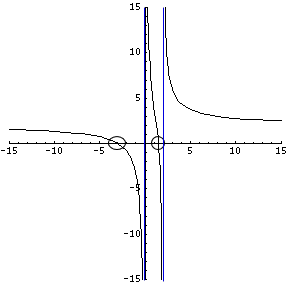

تاريخ الرياضيات

الاعداد و نظريتها

تاريخ التحليل

تار يخ الجبر

الهندسة و التبلوجي


الرياضيات في الحضارات المختلفة

العربية

اليونانية

البابلية

الصينية

المايا

المصرية

الهندية


الرياضيات المتقطعة

المنطق

اسس الرياضيات

فلسفة الرياضيات

مواضيع عامة في المنطق


الجبر

الجبر الخطي

الجبر المجرد

الجبر البولياني

مواضيع عامة في الجبر

الضبابية

نظرية المجموعات

نظرية الزمر

نظرية الحلقات والحقول

نظرية الاعداد

نظرية الفئات

حساب المتجهات

المتتاليات-المتسلسلات

المصفوفات و نظريتها

المثلثات


الهندسة

الهندسة المستوية

الهندسة غير المستوية

مواضيع عامة في الهندسة

التفاضل و التكامل


المعادلات التفاضلية و التكاملية

معادلات تفاضلية

معادلات تكاملية

مواضيع عامة في المعادلات


التحليل

التحليل العددي

التحليل العقدي

التحليل الدالي

مواضيع عامة في التحليل

التحليل الحقيقي

التبلوجيا

نظرية الالعاب

الاحتمالات و الاحصاء

نظرية التحكم

بحوث العمليات

نظرية الكم

الشفرات

الرياضيات التطبيقية

نظريات ومبرهنات


علماء الرياضيات

500AD

500-1499

1000to1499

1500to1599

1600to1649

1650to1699

1700to1749

1750to1779

1780to1799

1800to1819

1820to1829

1830to1839

1840to1849

1850to1859

1860to1864

1865to1869

1870to1874

1875to1879

1880to1884

1885to1889

1890to1894

1895to1899

1900to1904

1905to1909

1910to1914

1915to1919

1920to1924

1925to1929

1930to1939

1940to the present

علماء الرياضيات

الرياضيات في العلوم الاخرى

بحوث و اطاريح جامعية

هل تعلم

طرائق التدريس

الرياضيات العامة

نظرية البيان
Finding Roots
المؤلف:
المرجع الالكتروني للمعلوماتيه
المصدر:
www.almerja.com
الجزء والصفحة:
...
6-3-2017
1396
What is a "root"?
A root is a value for which a given function equals zero. When that function is plotted on a graph, the roots are points where the function crosses the x-axis.
For a function, f(x), the roots are the values of x for which f(x)=0. For example, with the function f(x)=2-x, the only root would be x = 2, because that value produces f(x)=0.
Of course, it's easy to find the roots of a trivial problem like that one, but what about something crazy like this:

Steps to find roots of rational functions
- Set each factor in the numerator to equal zero.
- Solve that factor for x.
- Check the denominator factors to make sure you aren't dividing by zero!
Numerator Factors
Remember that a factor is something being multiplied or divided, such as (2x-3) in the above example. So, the two factors in the numerator are (2x-3) and (x+3). If either of those factors can be zero, then the whole function will be zero. It won't matter (well, there is an exception) what the rest of the function says, because you're multiplying by a term that equals zero.
So, the point is, figure out how to make the numerator zero and you've found your roots (also known as zeros, for obvious reasons!). In this example, we have two factors in the numerator, so either one can be zero. Let's set them both equal to zero and then solve for the x values:
2x - 3 = 0
2x = 3
x = 3/2
AND
x + 3 = 0
x = -3
So, x = 3/2 and x = -3 become our roots for this function. They're also the x-intercepts when plotted on a graph, because y will equal 0 when x is 3/2 or -3.
Denominator Factors
Just like with the numerator, there are two factors being multiplied in the denominators. They are x and x-2. Let's set them both equal to zero and solve them:
x = 0
AND
x - 2 = 0
x = 2
Those are not roots of this function. Look what happens when we plug in either 0 or 2 for x. We get a zero in the denominator, which means division by zero. That means the function does not exist at this point. In fact, x = 0 and x = 2 become our vertical asymptotes (zeros of the denominator). So, there is a vertical asymptote at x = 0 and x = 2 for the above function.
Here's a geometric view of what the above function looks like including BOTH x-intercepts and BOTH vertical asymptotes:

Summary
Roots of a function are x-values for which the function equals zero. They are also known as zeros.
 الاكثر قراءة في مواضيع عامة في الجبر
الاكثر قراءة في مواضيع عامة في الجبر
 اخر الاخبار
اخر الاخبار
اخبار العتبة العباسية المقدسة

الآخبار الصحية















 "المهمة".. إصدار قصصي يوثّق القصص الفائزة في مسابقة فتوى الدفاع المقدسة للقصة القصيرة
"المهمة".. إصدار قصصي يوثّق القصص الفائزة في مسابقة فتوى الدفاع المقدسة للقصة القصيرة (نوافذ).. إصدار أدبي يوثق القصص الفائزة في مسابقة الإمام العسكري (عليه السلام)
(نوافذ).. إصدار أدبي يوثق القصص الفائزة في مسابقة الإمام العسكري (عليه السلام) قسم الشؤون الفكرية يصدر مجموعة قصصية بعنوان (قلوب بلا مأوى)
قسم الشؤون الفكرية يصدر مجموعة قصصية بعنوان (قلوب بلا مأوى)


















